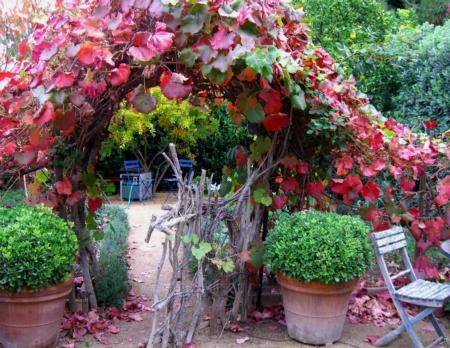Nov 28, 2021
With the cooler weather, gardening tasks may be slowing down some, but there are still plenty of things to do in the garden and landscape in the fall and winter months. Here are a few things to think about as you head into the next planting season. Follow the list to reduce future pest problems and have healthier plants.
Cleaning up
- Pull out annual plants that have reached the end of their growing season, such as tomatoes, squashes, and peppers.
- Remove and clean up old fruit and nuts in and under trees to avoid harboring pests and diseases.
- Remove fallen leaves from beneath deciduous fruit trees and roses.
- After cleaning up, add leaves dropped during fall to a compost pile. Turn and keep the compost pile moist.
- Apply organic mulch where thin or soil is bare beneath trees and shrubs. See our website for more information about mulching.
Pruning
- Prune deciduous trees and shrubs such as apple, crape myrtle, pear, rose, spirea, and stone fruits.
- Make cuts properly to encourage good form and structure.
- Remove dead, diseased, and borer-infested wood.
- Not all pests and host plants should be pruned in the fall. Certain pest-infested wood, such as damage from shothole borers, and plants such as apricot and cherry should be pruned during the summer.
Planting
- Fall is a good time to plant bare root deciduous trees, shrubs, and vines, such as caneberries, fruit and nut trees, grapes, and roses.
- Plant California natives now so they can establish before the summer.
- When you add new plants to your garden, select species and cultivars that are well-adapted to the local site.
Adjusting irrigation
- The weather has turned wetter and cooler, so adjust watering schedules since plants won't need as much water.
- Check your irrigation systems for leaks and broken emitters and do any maintenance.
- You might want to upgrade the irrigation system to improve its water efficiency.
- If it's not raining, water plants as needed to keep root zones moist, but not soggy.
- Prepare for rainfall by improving drainage. The goal is to prevent water ponding around trunks and foundations.
- Install downspout diverters to direct runoff into landscape soils, but avoid waterlogging of soil.
Monitoring for pests
- Look for Asian citrus psyllid on your citrus trees and if you find it in a new location, report it to your local county agricultural commissioner.
- Also monitor for damage and pests such as brown rot, leafminer, root rots, and snails on citrus trees.
- Check for leaf curl or shot hole on apricot, nectarine, peach, and plum trees.
Lawn care
- All types of lawns are actively growing during the fall months. Fertilizer applied at this time will help ensure that turfgrass is vigorous enough to outcompete weeds and resist other potential pest problems. Visit our website for more information about correct fertilization of established lawns, including when to fertilize in your region.
- Practice weed management for annual cool-season weeds. It's also not too early to consider management for weeds that emerge in springtime.
For more information, see the Seasonal Landscape IPM Checklist.
[Original article published in the Fall 2021 issue of the Home & Garden Pest Newsletter]
Topics:
